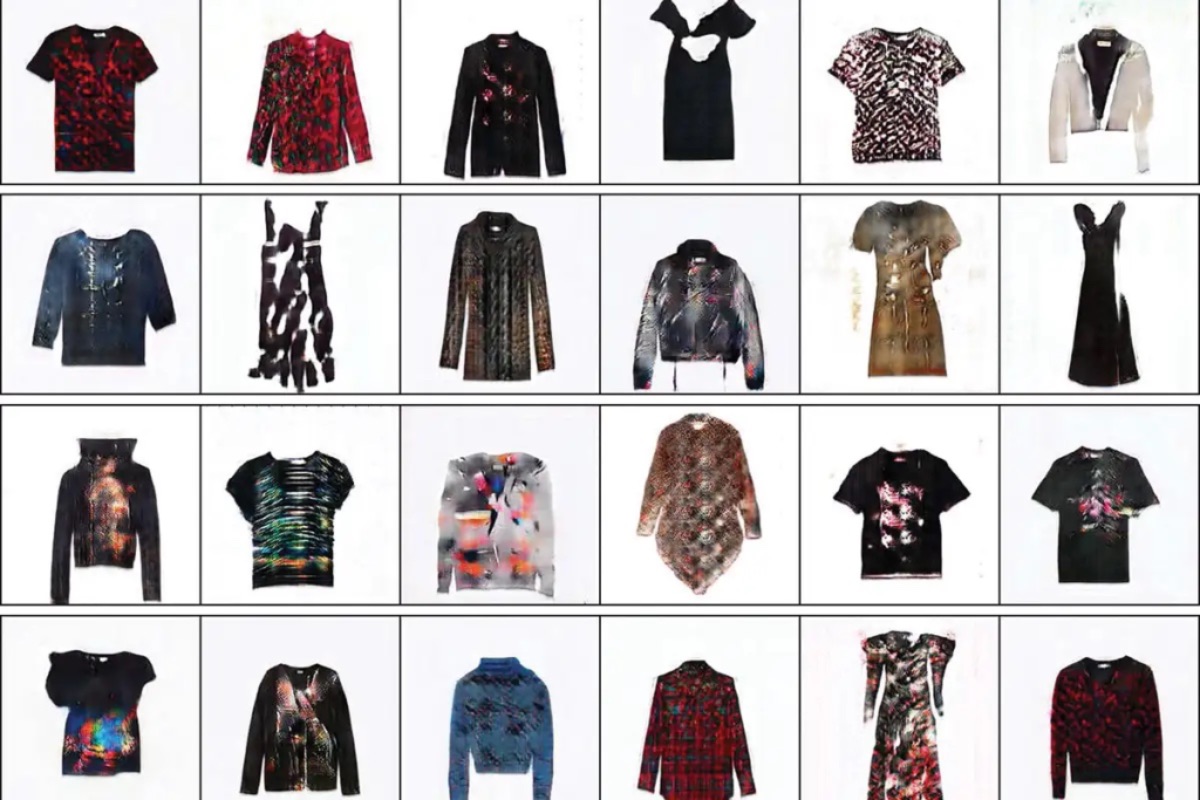
The realm of AI fashion design is revolutionizing the global stage, and the fashion sector remains at the forefront of this transformation. The applications of AI in fashion design are remarkably diverse, spanning from customer behavior analysis to elevating product photography standards.
But how effective is AI in fashion design, and how can it affect your brand? Read on to find out.
How is AI used in fashion design?
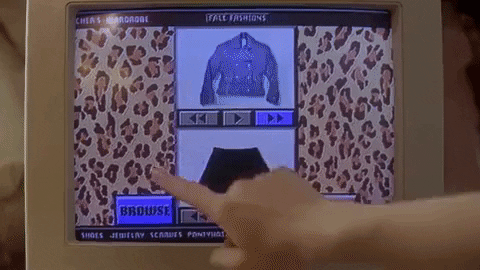
You might hear AI fashion design and conflate it with AI graphic design—the use of AI to generate new designs. However, AI has many uses in the fashion world, and high-end lines still rely on their human designers for vision.
Some common uses of AI in fashion design include:
- Supply chain management
- Business intelligence
- Marketing strategy
- Predicting trends
- Boosting ecommerce sales
- Assisting customers
- Personalization
- Product photos
- And yes, design
The world of AI fashion design is expanding, yet prominent fashion brands remain cautious about its potential. Maintaining a consistent brand image is pivotal for fashion collections. Can modern-day AI truly meet this demand?
Which fashion brands are using AI?
AI is employed as a business tool by a wide range of companies. While major brands haven’t adopted AI for design, it’s used in marketing by the likes of SHEIN, Dior, H&M, Nike, and Zara.
For a specific example, Dior has been using AI chatbots since 2017. AI has powered marketing analytics and customer support for years, but it’s expanding into marketing itself. Levi’s, for instance, is testing photorealistic AI fashion models.
What is AI fashion design?
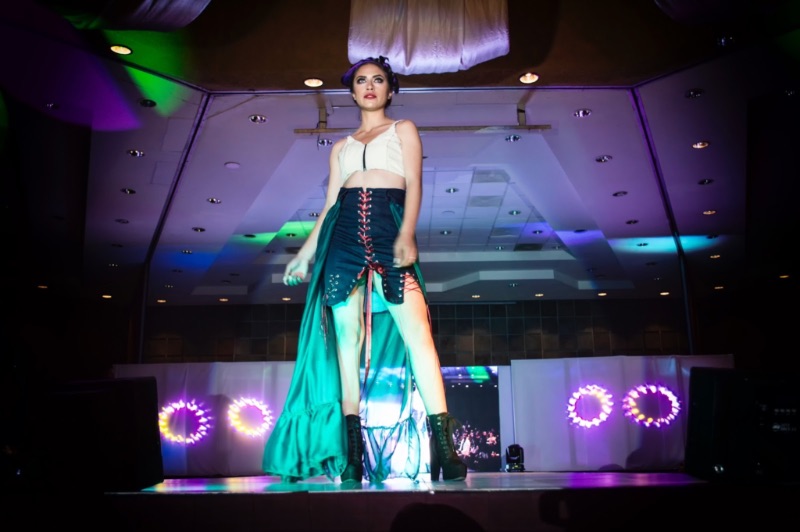
Fashion design involves infusing clothing with aesthetic beauty and artistic innovation. AI image generators, which craft visually appealing artworks, converge with AI fashion design, utilizing generative AI to shape upcoming fashion trends.
[in_content_ads gallery=”logos” logo=”on” title=”Need graphic design help?” subtitle=”Try Penji’s Unlimited Graphic Design and get all your branding, digital, print, and UXUI designs done in one place.” btntext=”Learn More” btnlink=”https://penji.co”]
5 mind-blowing examples of AI fashion design
The use of AI in the world of high fashion is still limited in scope, but it’s expanding quickly. Here are 5 examples of how AI is shaking up how we dress.
1) Booth.ai — AI-generated product photos for ecommerce
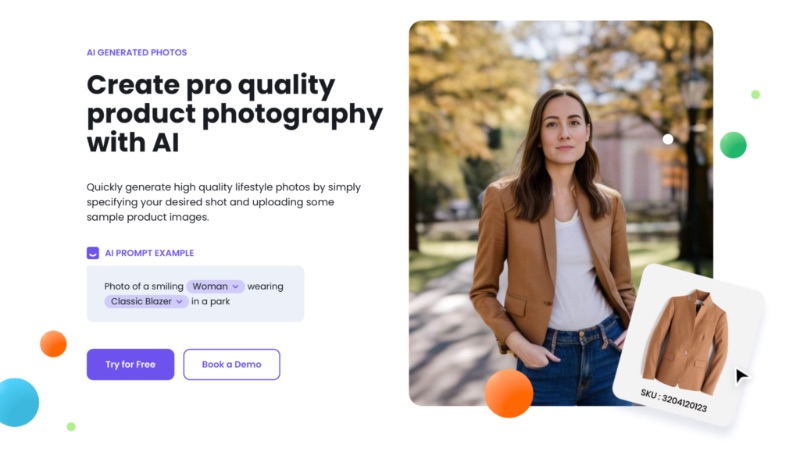
Founded in 2022, Booth.ai helps with ecommerce branding by letting you create pro-quality product photos in a snap. For indie fashion designers, this makes it easy to set up an online store and show off your designs in style.
You can try Booth.ai for free, and if you like it, you can add it to your business for $199/mo. They also offer custom solutions for enterprise customers. Check out their pricing page for more details.
2) CALA – Run your fashion brand with the power of AI
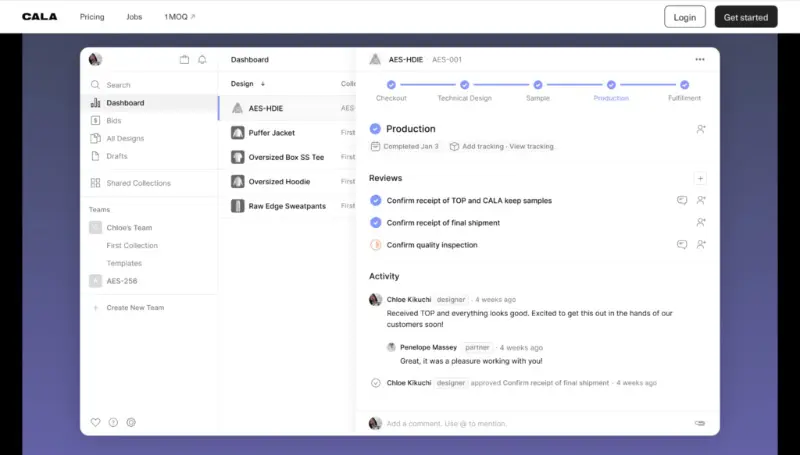
CALA is a business management platform designed for fashion—streamlining everything from product design to web development. And now, they’ve partnered with OpenAI to bring AI tech to the fashion world.
Leveraging DALL•E’s capabilities, CALA introduces a novel tool enabling AI-driven creation of unique designs, transformation into 3D mock-ups, and realization of your concepts; experience their AI design tool at no cost, or opt for unlimited usage with a $100/month Professional account.
3) Lalaland — AI-generated fashion models
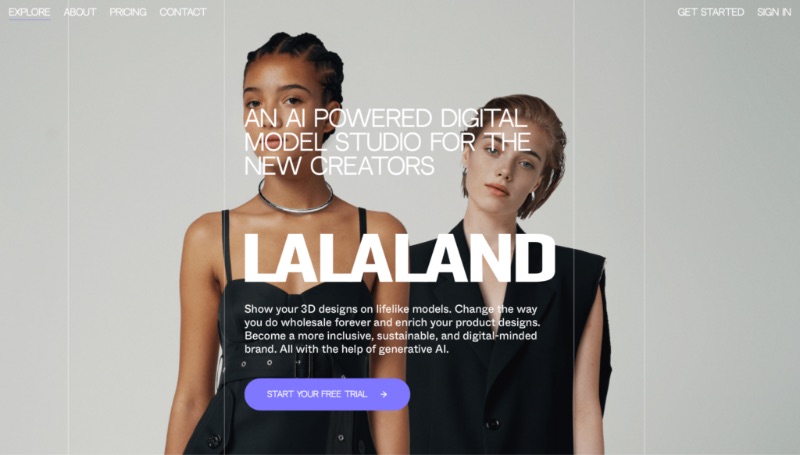
You read that right. You’ve heard of “this person does not exist,” but now get ready for “this model does not exist.” Lalaland creates lifelike 3D fashion models that can be customized and fitted with any style you can dream of.
Opinions may vary, with some labeling it an unsettling “uncanny valley” innovation, and others perceiving it as a worrisome job displacement endeavor. Yet, there’s no doubt that it highlights the remarkable strides in AI advancement. You can start by crafting your initial model at no cost, or delve into generating unlimited models from €480/month onwards.
4) Resleeve: Generative AI fashion design
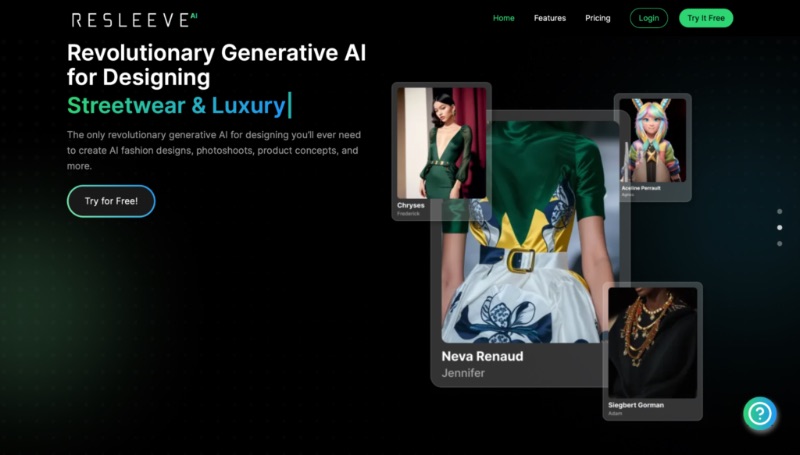
When you think of “AI fashion design,” you’re probably picturing a program for designing clothes and outfits with AI that you can then turn into a reality. If that’s what you need, look no further than Resleeve.
With this tool, you can upload products and receive AI-generated designs to choose from. You can also turn sketches into mockups, create virtual photoshoots, and fine-tune your designs with simple text prompts. You can get started for free or get unlimited designs starting at $19/mo.
5) AI Fashion Week
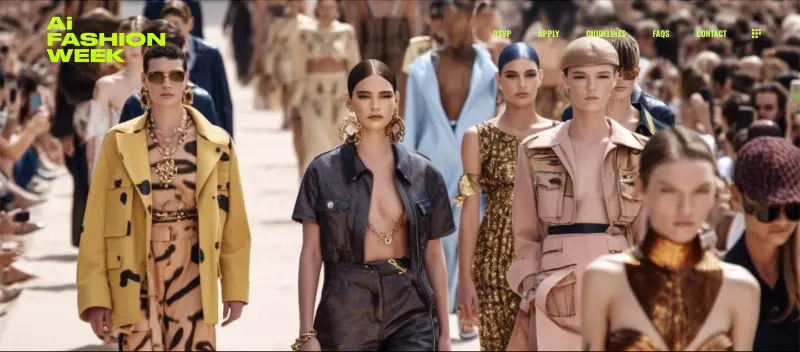
In April 2023, the inaugural AI Fashion Week saw Portuguese designer José Sobral win the top prize. Organized by NYC’s Maison Meta, the event took place at Spring Studios in SoHo, combining virtual and in-person experiences.
One of the most notable elements of this show is that it’s open to literally anyone. If the show gains attention, it could create a bold new avenue for indie designers to reach a huge audience.
The pros and cons of AI fashion design

AI in fashion is an exciting new trend, but it has its fair share of downsides, too.
Pros of AI fashion design
- Efficiency: AI accelerates design processes, automating tasks like pattern generation, color selection, and fabric matching, saving time and effort.
- Creativity Enhancement: AI tools offer innovative suggestions, inspiring designers with new ideas and unconventional combinations they might not have considered.
- Data-Driven Insights: AI analyzes fashion trends and consumer preferences from vast datasets, enabling designers to create styles aligned with market demand.
- Personalization: AI tailors designs to individual customer preferences, creating unique and customized fashion items, enhancing customer satisfaction.
- Sustainability: AI aids in optimizing material usage, reducing waste, and enhancing eco-friendly design practices in the fashion industry.
Cons of AI fashion design
- Loss of Human Touch: Overreliance on AI might lead to a loss of the artistic and emotional elements that human designers bring to their work.
- Uniqueness Challenge: As AI generates designs based on trends, there’s a risk of homogeneity, making it harder to create truly unique and standout fashion pieces.
- Limited Intuition: AI lacks the innate creativity and intuition of human designers, potentially resulting in designs that lack a certain depth or emotional resonance.
- Ethical Concerns: AI can inadvertently perpetuate bias if not trained on diverse datasets, leading to designs that are exclusionary or insensitive.
- High Initial Investment: Implementing AI systems and training models can be expensive, especially for smaller fashion businesses with limited resources.
Overall, AI provides exciting new opportunities for fashion design, but it’s far from perfect. If you’re trying to build the next big fashion brand, you should use AI to empower designers, not replace them.
And if you need help growing your business, give Penji a try. We’re an unlimited design service that can create digital graphics, social media elements, landing pages, print, packaging, and everything else you need for ecommerce excellence.
Sign up for a demo to see how it works.














